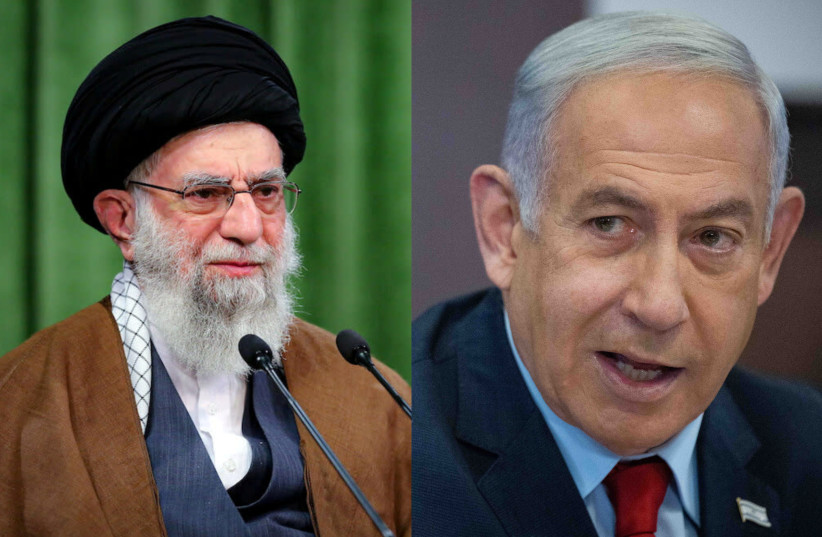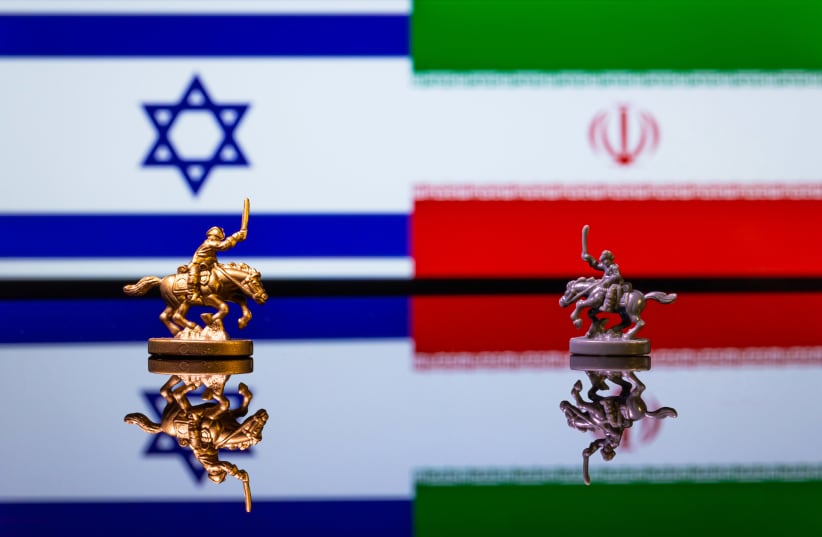This weekend, Hojatollah Omidvar, who served as the head of Iran’s Islamic Revolutionary Guard Corps (IRGC) Quds Force intelligence unit in Syria, was assassinated in the Damascus area, allegedly by Israel.
Omidvar’s deputy and three other senior officials were killed in the same strike.
Back in June, The Washington Post reported that Omidvar, also known as Haj Sadegh and Yousef Omidzadeh, “identified US Humvee and Cougar armored vehicles in Syria” to have his henchmen attack them. He was also believed to be deeply involved in coordinating attacks against Israel.
This came after the assassination on December 26, also attributed to Israel, of Sayyed Reza Mousavi, a senior commander in the IRGC. That assassination was also in the vicinity of the Syrian capital of Damascus.
Mousavi was even senior to Omidvar and was responsible for coordinating the financing and logistics of transferring weapons from Tehran to proxies in Syria.


He was also considered extremely close to Qasem Soleimani, the former head of the Quds Force who was killed by a US drone, aided by aspects of Israeli intelligence, in January 2020.
Other major assassinations recently attributed to Israel in Lebanon were of Hamas deputy chief Saleh al-Arouri and Hezbollah’s Radwan chief Wissam al-Tawil.
The only major assassination Israel took credit for publicly was of Hezbollah drone chief Ali Hussein Bergi, which it justified by saying he had directly orchestrated recent escalatory attacks on sensitive Israeli army bases and Israeli civilians.
Despite the public silence, The Jerusalem Post understands that the IDF has undertaken thousands of operations in Syria in recent years to prevent Tehran from mounting a new dangerous front on another of Israel’s borders and that senior ranks do not leave Iranian officials immune.
In fact, with the most intense part of the Gaza invasion already completed weeks ago, The Post understands that the air force has been more freed up for several other missions in the region.
This continually growing list of assassinations, as well as a mid-December massive cyber attack on Iran’s gas stations, presuming they were carried out by Israel, are sending multiple messages to the Islamic Republic.
The most obvious one is to stay out of Syria.
A 'price tag' for Iran
But the attacks are likely also a “price tag” for the Islamic Republic to make it pay for its sponsorship of Hamas and Hezbollah.
Even though the ayatollahs had no direct connection to the October 7 Hamas invasion of Israel, Iran provided funding, logistics help, and training for Gaza’s terrorist rulers for years, and since the conflict started has ordered attacks on Israel by Hezbollah in Lebanon, proxies in Syria, and the Houthis of Yemen.
For decades there was a shadow war between Israel and Iran, but if it ever traveled into the territory of Iran proper, it was usually only related to the ayatollahs’ nuclear weapons program.
There were always some exceptions, including some Iranian officials assassinated in April-June 2022, but the recent wave of targeted killings suggests conflict between the countries has entered a new phase.
Tehran has wanted to draw real blood from Jerusalem for years and finally succeeded on October 7, as well as since then with its other proxies.
For the ayatollahs, making as many as 250,000 Israelis evacuate their homes on multiple fronts is also as much a victory as the number of Israelis its proxies have killed.
Iran has also struck back, going after Israelis in India and other countries.
Also, Iran said it retaliated against the Mossad or Mossed-aligned Kurdish groups in Iraq last week with long-range missile strikes.
All of that could have been a smokescreen for the Islamic Republic to last out against opposition groups, which it also did against groups in Syria and Pakistan.
But it showed a greater readiness by Iran to flex its military might, with less fear of the destabilizing consequences.
There is also the gradually escalating fight between the Houthis and Iranian proxies in Iraq versus the US and some allies, for their support for the Jewish state during this war.
The final front is the nuclear weapons one, where IAEA chief of nuclear inspections Rafael Grossi on Friday all but threw his arms up in exasperation at being at a dead end in trying to get Tehran to restore full transparency over its suspicious nuclear activities.
With all of the many fronts it can act on, and while neither Israel nor the US has a silver bullet answer for how to resolve the threats posed by Iran, except the nuclear front, Jerusalem and Washington DC seem to have the upper hand.
On the nuclear front, they have not come to a strategy of how to halt Iran’s nuclear enrichment now for around three years running. There, America and the Jewish state for now seem to have sufficed with a threat to attack if Iran tries to cross the line to finalize production of a nuclear weapon.
Yet, on the other fronts, far more senior Iranian officials and critical assets, and those of their proxies, are going up in smoke than on the Israeli and American side.
The question that is still unanswered is: how to return stability to the region in a way that will leave Israeli security improved to avoid the possibility of another October 7 or similar repeat.
